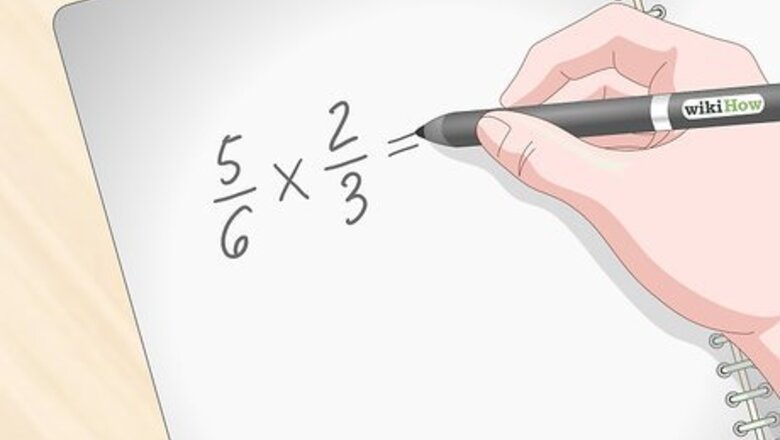
views
Multiplying Simple Fractions
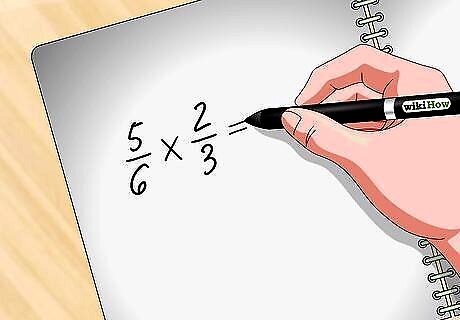
Write down the problem on a piece of paper. Being able to see your work will help you learn how to multiply fractions better. Plus, if you make a mistake, it’ll be easier to go back in your work to see the error. Each fraction has a numerator (the number on the top) and a denominator (the number on the bottom). Separate the numerator from the denominator with a straight, horizontal line. Try your best to keep your fractions in a straight line. This will just make it easier to stay organized and work efficiently.
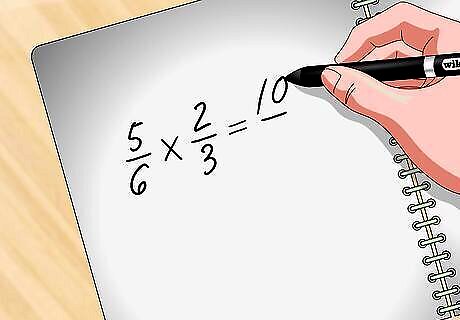
Multiply the numerators first. For example, if you’re asked to solve for 5/6 * 2/3, the first thing you’ll need to do is multiply 5 * 2, which gives you 10. This will be the numerator for your answer. In another example, solve for the numerator of 3/4 * 1/3. Any number times 1 will be itself, so your new numerator is 3.

Figure out the new denominator by multiplying the current denominators. In the example given, 5/6 * 2/3, multiply 6 * 3 to get 18. This is your new denominator. For 3/4 * 1/3, multiply 4 * 3 to get the new denominator of 12. The answer to your multiplication problem is 3/12.
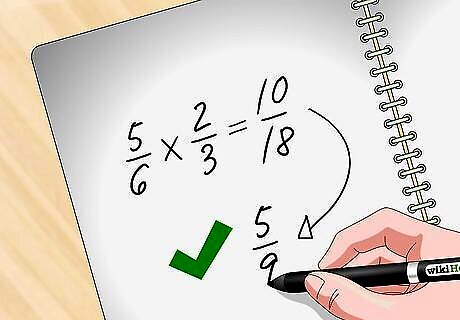
Simplify your new fraction to get it in the lowest form possible. If the numerator and denominator share common factors (they can be divided equally by the same number), you can simply your answer. For the example of 5/6 * 2/3, the answer you got was 10/18. Both 10 and 18 are divisible by 2. Divide both numbers by 2 to get your final, simplified answer, which is 5/9. Simply the fraction 3/12. 3 goes into both itself and 12 evenly. The simplified answer is 1/4. EXPERT TIP Joseph Meyer Joseph Meyer Math Teacher Joseph Meyer is a High School Math Teacher based in Pittsburgh, Pennsylvania. He is an educator at City Charter High School, where he has been teaching for over 7 years. Joseph is also the founder of Sandbox Math, an online learning community dedicated to helping students succeed in Algebra. His site is set apart by its focus on fostering genuine comprehension through step-by-step understanding (instead of just getting the correct final answer), enabling learners to identify and overcome misunderstandings and confidently take on any test they face. He received his MA in Physics from Case Western Reserve University and his BA in Physics from Baldwin Wallace University. Joseph Meyer Joseph Meyer Math Teacher Simplifying a fraction just changes the way the fraction is written. To simplify a fraction, you can cancel out the greatest common factor from the numerator and denominator or convert an improper fraction to a mixed number. This doesn't change the inherent value of the fraction.
Working with Mixed Numbers
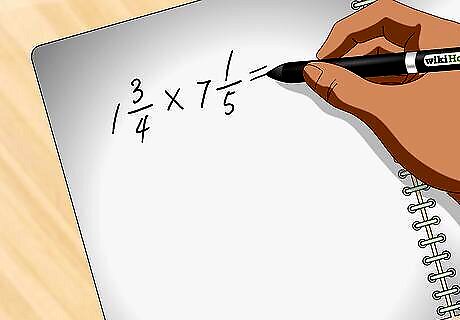
Write the problem down on paper so you can keep track of your work. You may be tempted to solve math problems in your head, but when you’re first starting out it’s a good idea to write everything down, step by step. This way, if you make a mistake, it’s easy to go back and see what happened so you can fix it moving forward. Fractions are made up of 2 parts, the numerator (the top number) and the denominator (the bottom number), and they are separated with a straight, horizontal line. To write a mixed number, put the whole number on the left-hand side of the fraction.
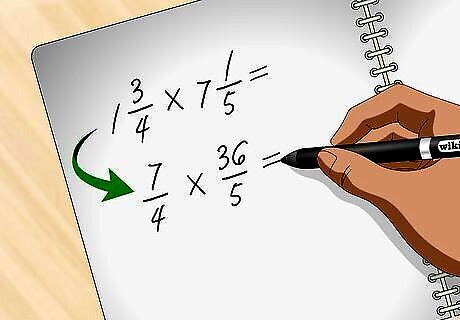
Change the mixed number to an improper fraction. For example, let’s say the problem you’re solving for is 1 and 3/4 * 7 and 1/5. The first thing you need to do is change both of those mixed fractions into improper fractions, meaning that the numerator will be greater than the denominator. Here’s how to do this: 1 and 3/4 = 7/4 when it’s made into an improper fraction. The denominator will always stay the same when making improper fractions. Multiply the denominator by the whole number (4 *1) and add that answer to the current numerator (3). (4*1) + 3 = 7. For 7 and 1/5, multiply the denominator by the whole number (5*7) and add that answer to the current numerator (1). (5*7) + 1 = 36. Put the new numerator over the original denominator for your improper fraction. 7 and 1/5 = 36/5.
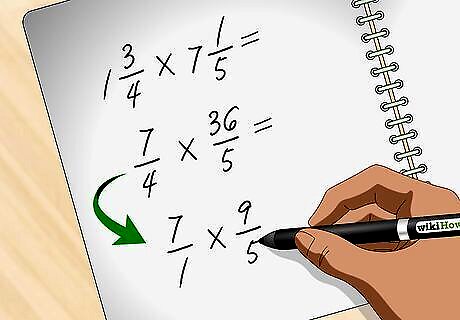
Simplify the improper fractions to make the numbers easier to multiply. In the example given, we are left with 7/4 * 36/5. While you could just multiply the numerators and the denominators, it will be easier to do the math if you can simplify the fractions first. When simplifying, check to see if the cross numerator and denominator can be divided equally by the same number. 7 and 5 cannot be, but 36 and 4 are both equally divisible by 4. To get your simplified fraction: Divide 4 by 4 to get 1, changing the first fraction from 7/4 to 7/1. Divide 36 by 4 to get 9, changing the second fraction from 36/5 to 9/5. You can also simplify single fractions if the numerator and denominator have a common factor. For example, if 7/4 were instead 8/4, you could simplify that fraction to 2/1.

Solve for the problem by multiplying the numerators and the denominators. Now all you have to do is solve for your fraction by multiplying 7 * 9 to get 63 for the new numerator. Multiply 1 * 5 to get 5 for the new denominator. The final improper fraction is 63/5.Tip: Remember to keep writing down your work step by step so you don’t get lost in the process. Mixed numbers and improper fractions can be a little tricky, but with practice, you’ll get the hang of it.
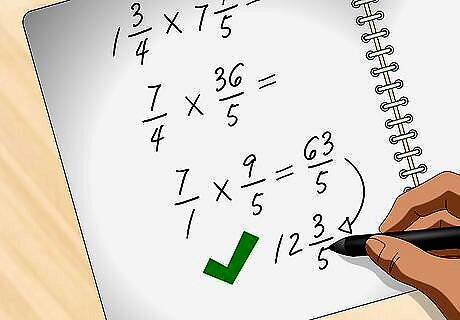
Convert the fraction back to a mixed number get the final answer. To get back to a mixed number, you just need to do some simple division. Divide the numerator by the denominator, so 63/5. 5 goes into 63 12 times, with 3 left over. 12 becomes the whole number and 3 becomes the new numerator. The denominator of 5 stays the same. In the end, 1 and 3/4 * 7 and 1/5 = 12 and 3/5. If you can’t do the division in your head for the whole number, write it out on your piece of paper.
Using a Calculator
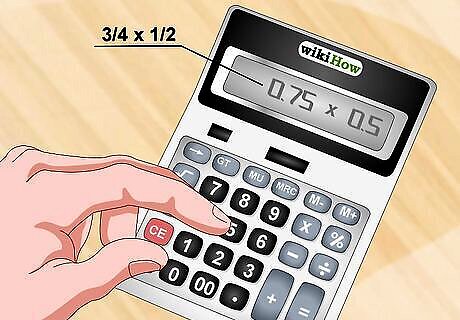
Make a fraction into a decimal to solve equations on the calculator. Enter your fractions individually into the calculator to get their decimal equivalents. For example, to solve for 3/4 * 1/2, 3/4 would be entered as 3 divided by 4, giving you the answer of 0.75. Enter the next fraction in the equation, 1/2, as 1 divided by 2 to get the answer of 0.5. Some calculators have functions that allow you to enter the fraction as a fraction so that you don’t have to deal with decimals at all. Check out your calculator’s instruction manual to see if that’s an option that is available to you.

Use mixed numbers by putting the whole number in front of the decimal. It’s really easy to use mixed numbers in your calculator, even if your calculator doesn’t have a fraction function. Simply follow the step to turn the fraction into a decimal and then place the whole number in front of the decimal point to continue with your equation. For example, to turn the mixed number 3 and 3/4 into a decimal, all you have to do is divide 3 by 4 on your calculator, getting 0.75. Then, place the 3 in front of the decimal point to get 3.75.

Multiply the decimals on the calculator. For the example of 3/4 * 1/2, punch 0.75 * 0.5 into your calculator. You get the decimal 0.375 as the answer. It can really help to write down your answers on a piece of paper as you work, just in case you forget something or accidentally clear away your calculator screen. If your calculator has parentheses, you could also put the equation into the calculator all at once by typing: (3/4) * (1/2). The “/“ stands for the division button.

Turn decimals back into fractions. On a piece of paper, write the decimal over the denominator of 1, so for the example of 3/4 * 1/2, you would write 0.375/1 on a piece of paper. Multiply the numerator and denominator by however many places there are after the decimal point. 0.375 has 3 digits after the decimal point, so multiply the decimal and the denominator of 1 by 1000 (use your calculator to help if needed). You end up with 375/1000. If your calculator has the fraction function, you can usually convert the decimal to a fraction just using your calculator.
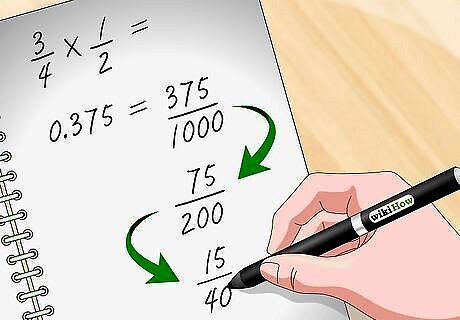
Simplify your fraction to get the final answer. All that’s left once you’ve turned the decimal into a fraction is to simplify your answer. For big numbers, you might have to simplify more than once to get the smallest possible fraction. For 375/1000, the number 5 goes into both 375 and 1000, simplifying the fraction to 75/200. That fraction can simplify again by the number 5, which gives you 15/40. Do it one more time to get the final answer of 3/8. It’s totally okay if it takes you a few steps to simplify a fraction. Take your time, don’t rush your work, and you will get there in the end!












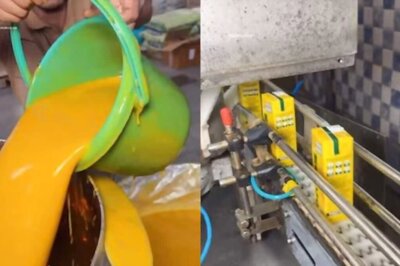







Comments
0 comment